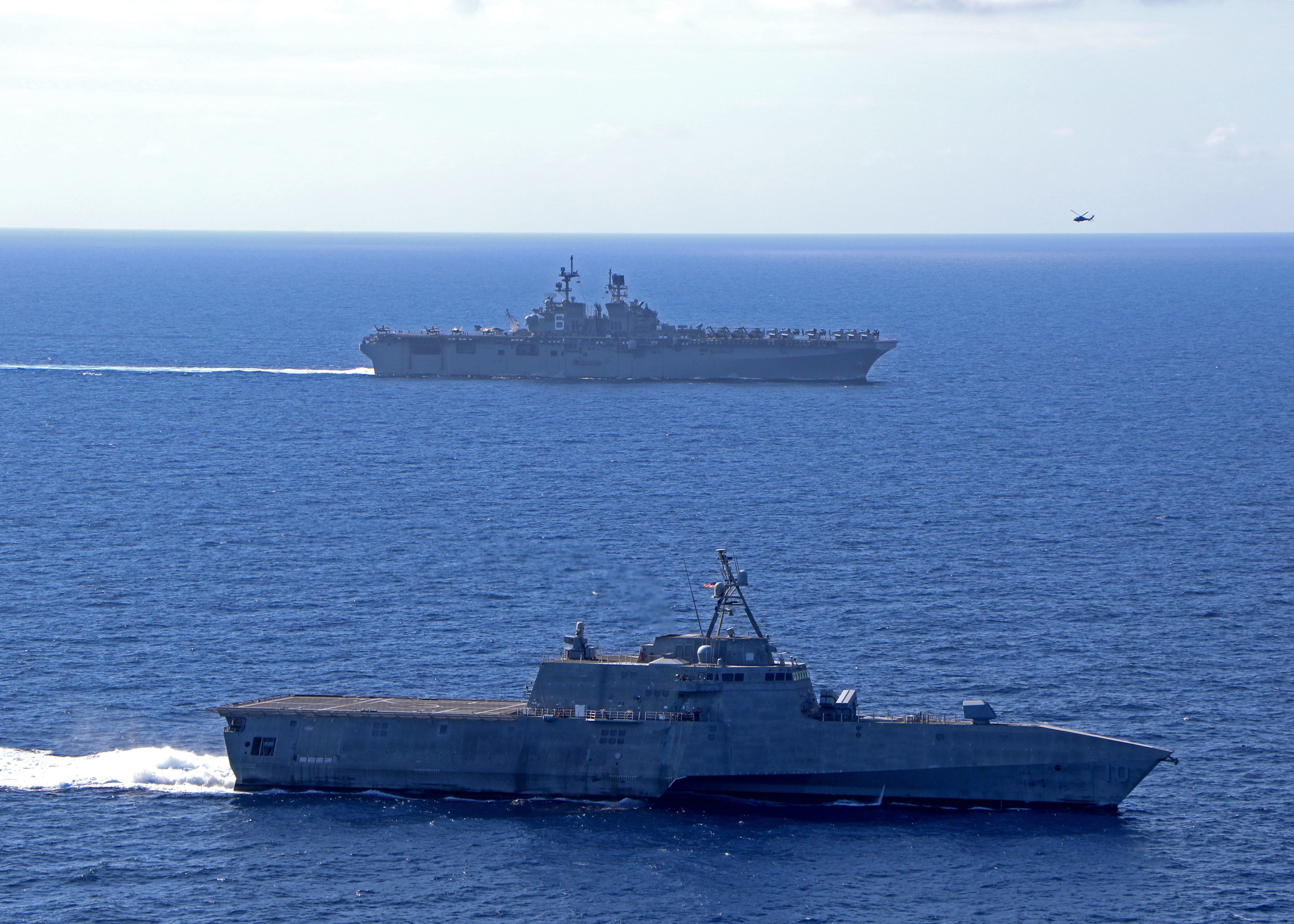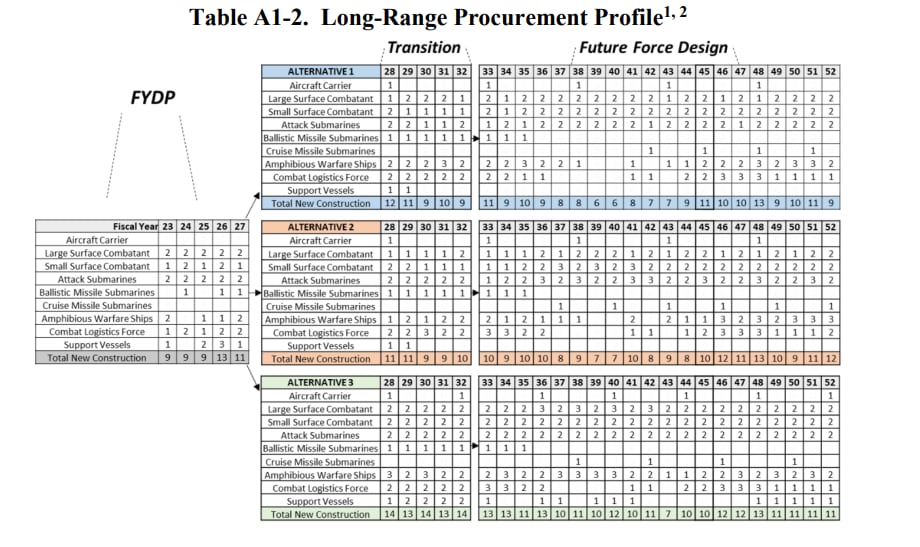The Navy has unveiled its new 30-year shipbuilding plan, which offers three different proposals for building up the fleet — but only one carves a pathway to 355 ships, which has been the sea service’s goal since 2016.
The proposals, which do not differ until fiscal 2028, offer two scenarios for procurement under “a budget with no real growth,” while the third scenario provides options under an unconstrained budget.
The Navy would reach 316 ships by 2052 under the first plan, but would build nine more under the second, reaching 327 ships within the same time frame. In the unconstrained plan, the service would reach a fleet size of 367 ships in 2052 — crossing the 355-ship threshold in 2043. Although Navy ofocials believe the industrial base can support the third option, the report said no independent assessment has been conducted yet.
“The further away in years you get from 2022, the less certain the future is,” Vice Adm. Scott Conn, deputy chief of Naval Operations for Warfighting Requirements and Capabilities, told reporters Wednesday. “And there’s uncertainty that continues to increase over time — uncertainty in terms of the fiscal budgets that we’re going to have to deal with, and uncertainty with respect to what China and Russia may be doing and be able to produce.”
The Navy provided multiple scenarios that take into account some of the ambiguity regarding a hybrid force of manned and unmanned vessels and the resulting technical questions that remain unknown, Conn said. Once those answers are nailed down, the ranges will become more definite.
RELATED

At the same time, the options provide a “floor,” and offer lawmakers and industry leaders insight into where the Navy would like to head should more resources become available, said Jay Stefany, who is performing the duties of assistant secretary of the Navy for research, dDevelopment and acquisition.
The biggest difference between the first two plans is the composition of the fleet due to unmanned systems, Conn said. In the event of no real budget growth, the Navy anticipates having 89 to 149 unmanned platform systems by FY45, according to the report.

The Navy would also procure five new aircraft carriers between FY28 and FY52 under the first two proposals, whereas the third plan accommodates the acquisition of seven carriers in that timeframe.
The shipbuilding plan also sheds light on what vessels the Navy will seek to decommission next. Specifically, the plans calls to decommission the Independence-variant littoral combat ships Jackson and Montgomery in FY24. The Navy is currently pushing to decommission nine Freedom-variant littoral combat ships in the FY23 budget.
Additionally, the proposal calls for decommissioning the Ticonderoga-class cruiser fleet by FY27.
Some lawmakers have cautioned that they will challenge the proposal. Members of Congress have frequently criticized the Navy not only for failing to expand the fleet to counter China’s growing power but also for a lack of maritime strategy. The legislative branch is not expected to get on board with the Biden administration’s FY23 proposal to decommission 24 ships.
“President Biden’s shipbuilding plan is a blueprint for American weakness,” said Sen. Roger Wicker, R-Miss., in a statement. “For years, our Navy fleet has suffered from underinvestment and a lack of planning to meet our nation’s 355-ship requirement. President Biden’s plan would worsen this trend by ending the production of critical ships early, without a plan to replace their capabilities.
“If the President will not help us get there, Congress must step in and do the job ourselves,” Wicker said. “We cannot afford to surrender naval superiority to our adversaries.”
Reps. Rob Wittman, R-Va., and Mike Rogers, R-Ala., echoed similar sentiments and said that attempting to “save a couple dollars” now jeopardizes U.S. warfighters’ safety amid China’s growing naval presence. As a result, they said Congress must “reject this plan.”
“It takes years to build a ship, and we no longer have the industrial strength we had during WWII to nearly instantaneously produce thousands of ships in times of conflict,” Wittman and Rogers said in a statement.
“The Biden administration’s 30-year shipbuilding plan reduces our ability to protect our aircraft carrier strike groups, reduces the Navy’s ability to eliminate an enemy’s minefield, reduces the Marine Corps’ ability to conduct forcible entry missions and reduces almost 10% of our fleet’s ability to launch missiles,” Wittman and Rogers said.
RELATED

But Conn countered that challenging decisions had to be made based on “fiscal reality,” and noted that buying back the ships the Navy wants to retire before their expected service life ends would cost billions of dollars.
“We believe that there’s better use of those taxpayer resources to prevent a war, and if we find ourselves in war, to be able to fight and win that,” he said.
Under the Navy’s current budget proposal for FY23, the fleet would reach a size of 280 by FY27. The budget requests to decommission 24 ships from the fleet — 16 of which would retire prior to the end of their service lives. Included in that group are nine Freedom-variant littoral combat ships, one cruiser and two expeditionary transfer docks.
Additionally, it requests funds to build nine ships, including two Virginia-class attack submarines, two Arleigh Burke-class destroyers, one Constellation-class frigate and one America-class amphibious assault ship.









